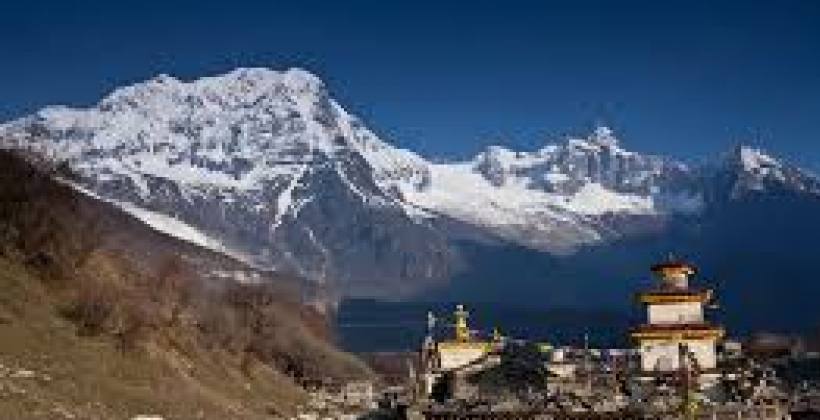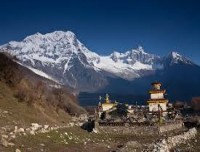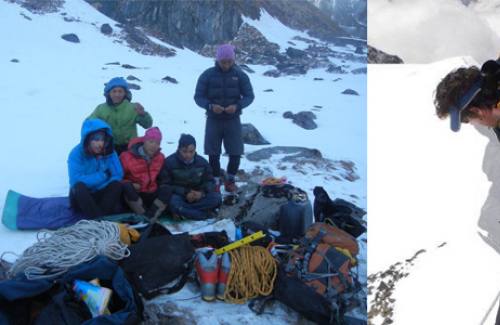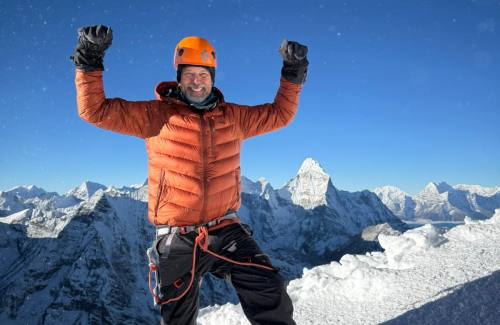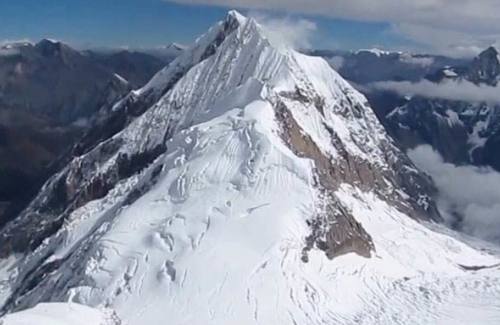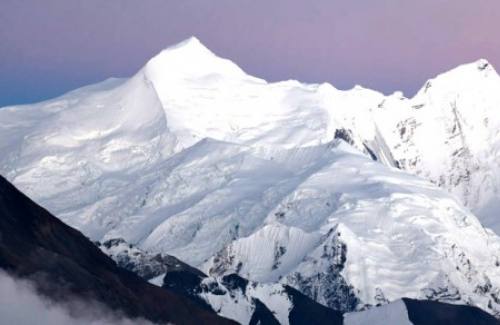Manaslu Trek - 0 Days
-
Trip grade NA
As in most treks in Nepal that reach 5000+ meters, this is mostly a valleys trek. The trek surrounds the Manaslu range. At 8163 meters high, the Manaslu is the 8th highest mountain in the world. A Japanese expedition was the first to reach its top in 1956, by summiteers Gyalzen Norbu & Toshio Imanishi. Many other impressive peaks are seen during the trek. But peaks are not the trek’s only ‘peaks’. As it starts in an altitude of around 500 meters and reaches over 5100 meters, the trek is a real journey "into the Himalayas”, starting from the lower hills reaching the high Himalayas with the entire natural and men made landscape changes on the way.
The trek goes up along the beautiful gorge of the Budhi Gandaki River, then traverses the tiresome Larke (sometimes spelled Larkye) Pass at 5106 meters, then goes beside impressive glaciers before joining the Dudh River. The latter merges with the Marsyangdi River where you can decide if you continue to go around the Annapurna range or head back down to finish the trek.
Technically the trail has various levels of difficulty. Some parts are smooth and gradual, and some parts are pretty steep. Long sections of the trail, especially the steep ones on the lower Budhi Gandaki sections are "paved” with stone stairs that can be tiresome for those suffering from knee problems.
If you decide to include Tsum Valley as well, we recommend spending at least 7 days in Tsum Valley. This will extend the whole trek to 25 days (The sleeping stations: Arughat, Lapubeshi, Tatopani, Jagat, Lokpa, Tsumling, Chhokang Paro, Nile, Nakyu, Gumba Lungdang, Domje, Lokpa, Bihi Phedi, Namrung, Lho, Samagaon, Samagaon, Samdo, Samdo, Dharamshala, Bhimtang, Gowa, Tal, Syange, Kathmandu).
Although possible, we wouldn’t recommend shortening this recommended schedule, as the time needed for walking distances as well as the rest days are vital for your health and enjoyment. Adding more days is of course recommended.
Trekking around Manaslu offers an unique opportunity to experience relatively "untouched" region of Nepal. Opened for trekking only in 1991, it provides spectacular beauty along the border of Nepal and Tibet/China and is now a controlled trekking route which requires special permits to organize trekking groups to venture round its spectacular circuit. It is located in west central part of Nepal. Fantastic mountain scenery, spanning altitudes from 575 m to 5100 meter Dramatic Larkya La (pass) this is one of the friendly pass of Nepal.
The standard 15 to 16 days hike begins from Arughat small town of Gorkha district Trekking of Manaslu round goes through two National park of Nepal (Starts from Manaslu Conservation area and end other side at Annapurna Conservation Area. A diverse range of ecosystems and ethnic cultures, and a trail that puts closer to Tibet than any other trek in Nepal.
Please note that the following program is prepared in the fact basis however can be change in some circumstances but adjustments will have to made during the trekking. We request you to be flexible with the situation to enjoy yourself.
As the trek is designed for camping arrangement, everything is handled by our team of porters, sherpas, cooks and guide who carry the equipment, set up the camp and have hot meals waiting for you at every food break
Trip Highlights
- Manaslu trek is restricted area trekking.
- drive to Arughat,Beshisahar amazing view of landscape,lcocal community and food.
- Visit remote part of Nepal and many verities of Culture and nature.
- Very beautiful backdrop of Ganesh Himal mountain range, Mt. Manaslu, rich cultural heritage, Sama Gaun.
- secred Tsum valley is the attrection, you see the real tribe of himalayan land.
- Best views of Himalayas range.
- Pass over the Larke La.
Outline Itinerary
Day 01: Arrive Kathmandu & drive to hotel
Day 02: Full day sightseeing in Kathmandu valley
Day 03: Kathmandu to Arughat (608m)
Day 04: Arughat to Soti khola (700m)
Day 05: Soti khola to Macha khola (869m)
Day 06: Macha khola to Jagat (Restricted Area starts) (1340m)
Day 07: Jagat to Deng (1860m)
Day 08: Dang to Namrung (2630m)
Day 09: Namrung to Lhogaun (3180m)
Day 10: Lhogaun to Samagaun (3520m)
Day 11: Samagaun Rest day
Day 12: Samagaun to Samdo (3875m)
Day 13: Samdo to Dharmashala (4460m)
Day 14: Dharmashala to Larke pass (5160m) to Bhimthang (3590m)
Day 15: Bhimthang to Gho (2515m)
Day 16: Gho to Dharapani (1963m)
Day 17: Dharapani to Besisahar (760m)
Day 28: Besisahar to kathmandu
Day19: kathmandu rest day Departure
Full Board Service Details
What's included
4 night 3 star hotel in kathmandu
Transport: Drive to Arughat private vechile
English Speaking Government licensed holder Trekking guide
Assistance Guide and porters
Foods and Accommodation in T-house lodge ( 3 meals a day with tea, coffee)
All Nepali staff and porters insurance during the trip
Flight /local transport (
National Park fee, TIMS Permit
Airport tax
What's not included
Lunch & Dinner during Kathmandu stay
Personal trekking warm clothes, sleeping bag
High risk medical insurance
International air ticket.
Alcohol , beverages & telephone calls
Emergency rescue evacuation if needed.
Tips (end of the trip) for your trekking staff and porters.
If bad weather and other natural disasters circumstance makes your trip longer than our estimate itinerary and the cost will be extra!
Detail Itinerary
Detail Itinerary
What is tea house trekking?
Tea house trekking is popular in Himalayan region. Local community run the tea house and lodge. They serve good foods (breakfast, lunch and dinner) these tea houses have good facility with hot water, comfortable rooms with attached bathroom, you can know the local culture, people and tradition and way of living in the trekking route.
What is camping trekking?
Camping trekking is organized and supported with team of professional guide, Sherpa, cook and porters. They accompany you, while trekking porters carry all the logistics like, tents, kitchen accessories, food, and fuel. Trekker should carry his/her minimal personal belongings while trekking.
What is the best time for trekking in Nepal?
The best season for trekking is March to May and September to November, during this period the weather is stable and clear, it is very wonderful time to experience the real Nepal to see the amazing view of mountains, snow caped Himalaya and flora and fauna and culture of local people in the Himalayan region.
How difficult is trekking as I aspect the route?
Trekking is challenging walk in the different altitude, landscape and terrain so it depends on the location and choice of the trekker and the trekking route. There are easy, difficult and extreme treks in the Himalayas. One can choose out of different options of trekking packages provided by the trekking company.
Is there any age limit for trekking in Himalaya?
There is no any age bar in trekking in the Himalaya. We design trek for children, teenager as well as senior citizen. For children and senior citizen we offer short and easy treks like around Kathmandu and pokhara valley. For adult and teenager we offer moderate and extreme trek.
Is trekking permit required?
Yes, you need trekking permit while trekking. Depending on the trekking area you require special permit like restricted area, for other you need conservation / National park entry permit and TIMS (Tourism information management system) card.
How can I book the trekking package?
First you need to log in to our web site HimalyanEcstasyNepal.com; you can get further information in our web site about booking the trekking package. If you are already in Nepal then you can visit our head office in Thamel in front of Kathmandu Guest House. Then we can arrange your trekking package according to your choice.
What type of insurance should I have to do before coming Nepal? Is there insurance facility there?
You should do your insurance from your respective country, which covers your risk, emergency evacuation by helicopter, medical treatment and other possible risks. Here is no policy as such.
Is it possible to communicate to my family while trekking?
You can have easy access to communication but in remote areas we use satellite phone. So communication won't be an issue.
What should be the criteria for physical fitness to trek in Nepal?
The trekker should have general physical fitness, some experience of hiking, should not have any chronic disease, cardio respiratory diseases etc.
Can I trek in the Himalayas of Nepal without prior trekking experience?
Yes you can trek without experience, but you should acclimatize first, have good health, we guide you according to your need, you can do difficult and extreme treks.
Is it necessary to use guide and porter while on trek in Nepal?
It is highly recommended as guide knows the route very well, and communication with local people is easier with guide. Security is the major issue.
Does HEN arrange domestic and international flights and booking hotels?
Yes HEN arrange domestic and international flights and book hotels, we serve this service to our costumers only.
What is the standard of water, sanitation and fooding and lodging while trekking?
As trekking is done in different landscape and trails, those routes are far away from pollution. Water here is drinkable but taking into consideration of our client's health and hygiene we provide mineral water which is purified and filtered. We provide standard and healthy foods. We provide best and comfortable lodging service available in trekking route.
Can I trek without porter and guide?
Yes you can trek without guide, but we suggest you not to trek without guide, due to security reason. Communication with local people, and trek route topography and weather as well as natural disaster are the challenges; if you go with guide it would be more comfortable for you.
How can I avoid blisters?
Shoe and socks should be comfortable, select right size, thick sole and matter of inner sole. If you have sweating feet then you have to change your socks frequently keep your feet clean and dry. You should carry blister prevention tape; skin tape can be helpful.
Do I need trekking pole?
Yes you do need trekking pole, it helps you save energy in high ascend and descend, if you have weak hips and knees and it helps to reduce the strain.
How will you help me if I suffer from altitude sickness or accident ?
Depending on the seriousness of the accident we provide first aid if not then company can arrange the evacuation operation to the nearest medical facility and in case of any emergency company could bring you to Kathmandu.
Where to stay during trekking?
You stay in local lodge or tea house; they have basic facilities like food, accommodation for sleeping and hot safe drinking water. Your guide helps you to accommodate in good lodge or tea house while trekking.
What is the guide's qualification who guides us?
We have government certified and experienced guide who can speak English very well, have good experience of trekking route and have good sense of humor, have knowledge to describe the local culture and community, biodiversity and flora and fauna.
What is the guides and porters safety and about their insurance?
We do insurance for guide and porters, we provide first aid kit for our staff's medicine, and provide emergency rescue. We are always conscious about the health and safety of guide and porters.
Is there tipping compulsory for guides and porters?
Tipping is not necessary for HEN staffs, although tipping for guide and staff is good practice, porter and guide expect tip, your tip helps their family.
How to avoid motion sickness ?
While trekking or driving you may feel motion sickness, vomiting there may be many reason, due to curves and the altitude complete different terrain and topography. Drink enough water while trekking, take lemon pieces, chew ginger or you can use motion-sickness tablets, such as Dramamine. You should not be worry about motion sickness, it is self treatable and get rid of it .
Trekking equipment
- XL /M size Duffle Bag
- Rucksack (40ltr-55ltr)
- Down Jacket
- Water proof Jacket
- Jumper or pile jacket
- Hiking shirts
- Hiking pants
- T-shirts
- Full –Sleeves shirts
- Sun hat
- Personal towel
- Sleeping bag – 200 above (3/4 season)
- Camp shoes
- Rain poncho or Umbrella(if you are summer travel)
- Plastics for cover your personal bag when gets rain
- Polypropylene /wool socks
- Water bottle
- Flash light
- Batteries and bulbs
- Medical& First-aid kit
- Swiss army knife
- Sewing kit
- Light weight fleece jacket
- Wool long under wear
- Light cotton socks for under wools socks
- Woolen socks to wear with boots
- Mountain trekking boots/ water prove shoes
- Insulated pants
- Nylon wind stopper
- Nylon wind pants
- Long under ware
- Woolen hat
- Gloves /fleece/mitten
- Gaiters
- Goggles or sunglass UV protected
- Sun block
Toiletries
- Camera /memory stucks
- 1 medium sized quick drying towel
- Toothbrush/paste (preferably biodegradable)
- Multipurpose soap (preferably biodegradable)
- Deodorant
- Nail clippers
- Face and body moisturizer
- Feminine hygiene products
- lip balls/ sun creams UV protect
- Mosquito protect creams (required only summer)
- Personal your nature things
Related Packages
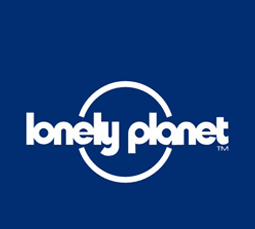
Our Best Selling
Our collection of the most best selling packages in 2016-
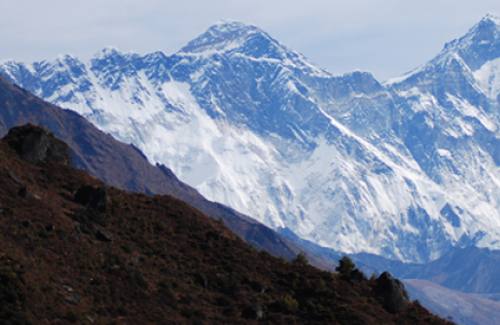
Everest Base Camp Trek
EBC Trek- Duration 17 Days
The Everest Base Camp is the adventure of a lifetime…
-
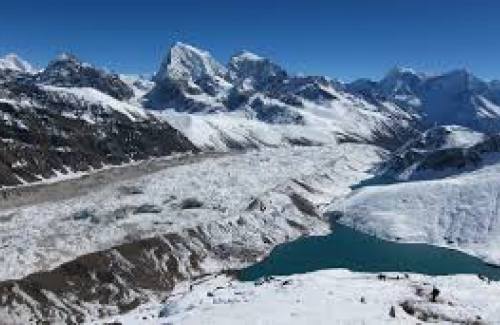
Chola Everest Base Camp Trek
- Duration 18 Days
Everest basecamp via Gokyo Chola pass trek is adventerous trekking…
-
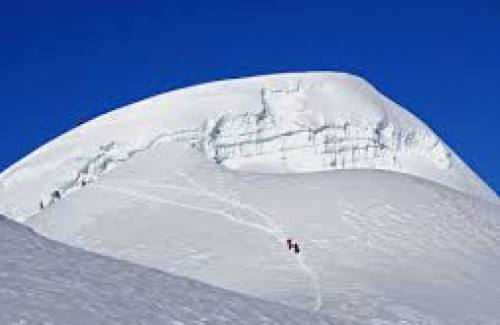
-
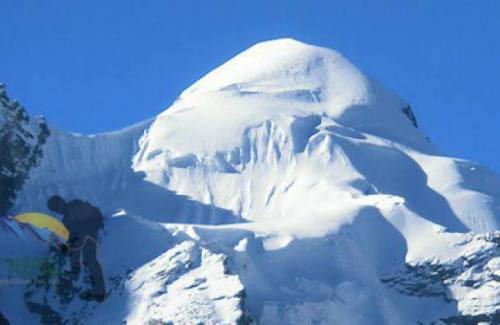
Naya Kanga (Gyanja La peak)
- Duration 17 Days
Naya Kanga (5844m) is shapely mountain rising to the west…
-
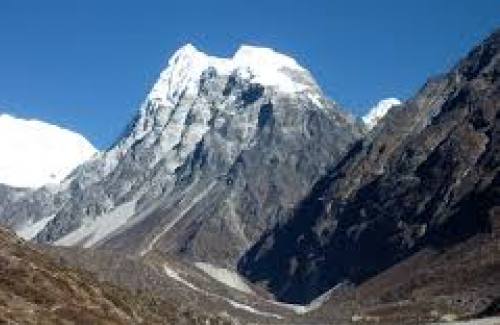
Baruntse Expedition
- Duration 33 Days
The potential for climbing "east of Everest" was first recognised…
-
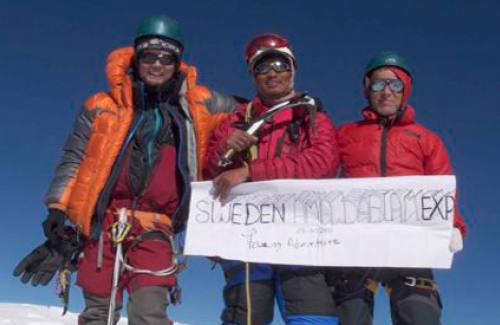
Amadablam Expedition
- Duration 30 Days
Amadablam alternatively known as Amai Dablang is a small snowcapped…
-
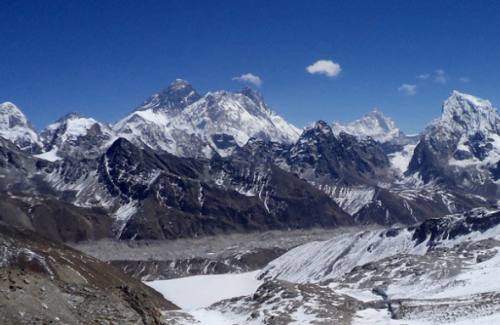
AFFILIATIONS
We are proud to join.





